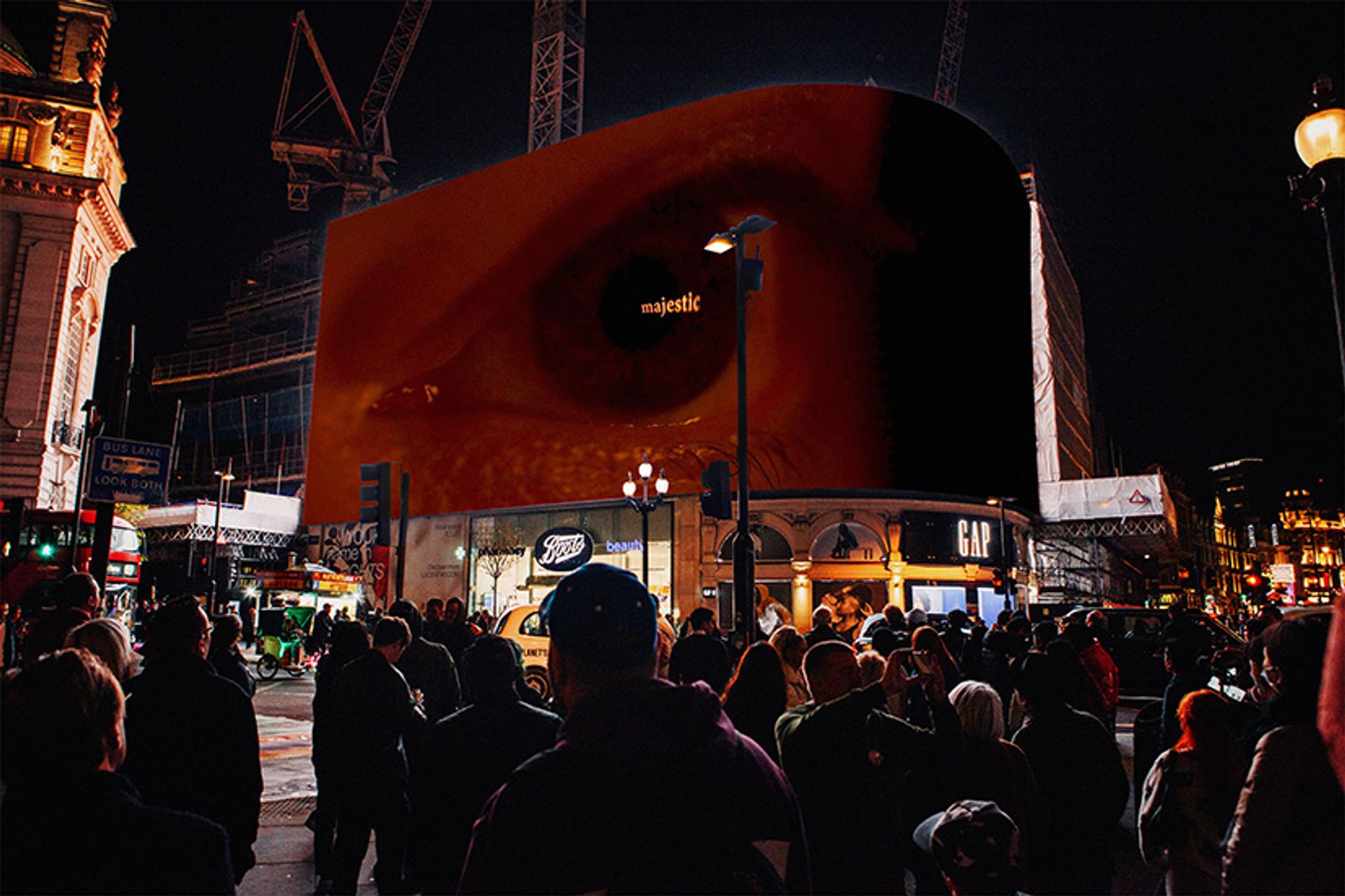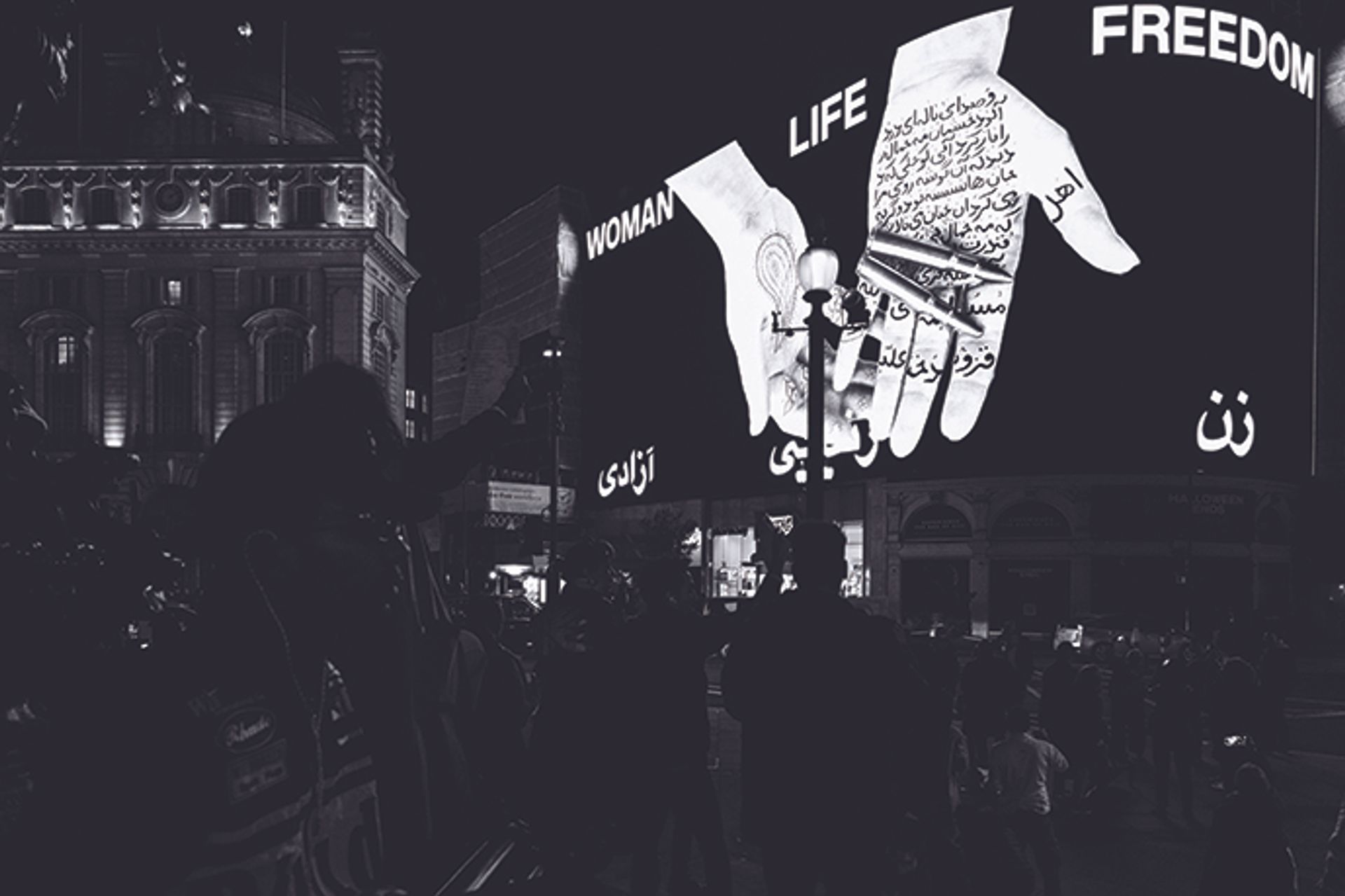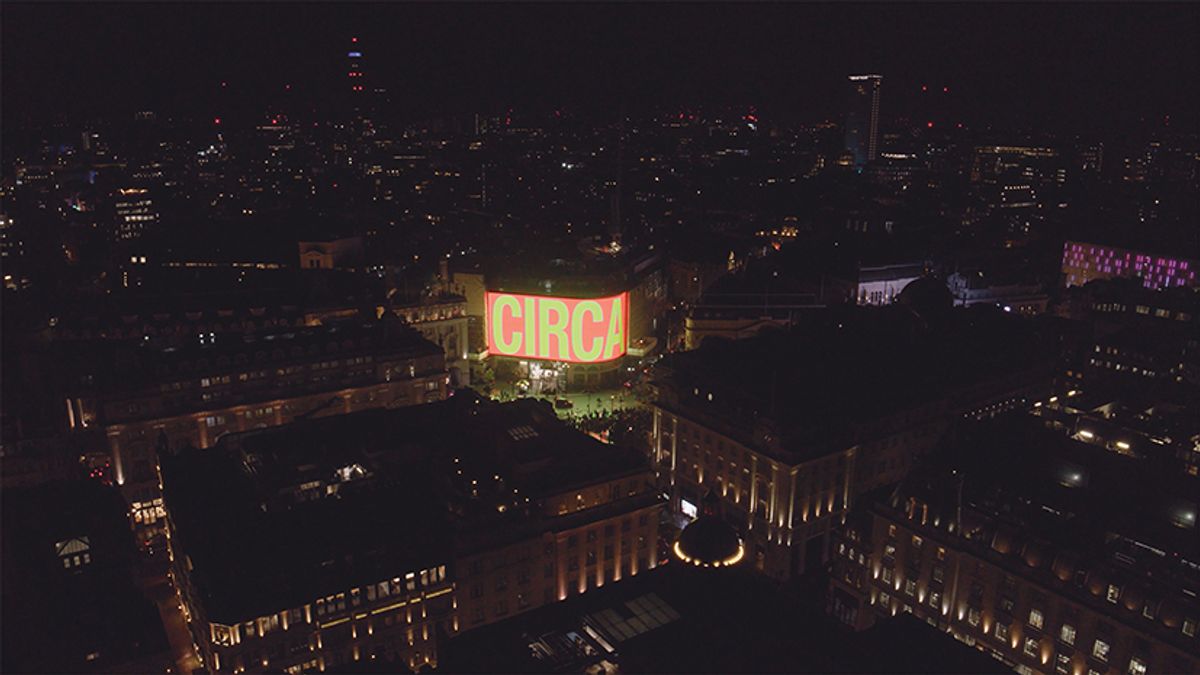As Britain enters the festive season gripped by a fuel and cost-of-living crisis, as well as an escalating climate emergency, the annual firing-up of London’s West End Christmas illuminations seems almost perversely profligate. This year Oxford and Bond Streets have at least acknowledged the warming climate by introducing energy-efficient bulbs and limiting their illumination times, but the gesture, especially in view of the generic feebleness of their designs, still seems pretty paltry.
But alongside the vapid, vaguely sustainable crowns and stars currently adorning London’s main shopping streets is an infinitely more appropriate and imaginative use of light to reflect and address our troubled times: the ongoing artistic occupation of the illuminated billboard at Piccadilly Circus by the Cultural Institute of Radical Contemporary Art (Circa), a public art initiative that describes itself as “an art and culture platform with purpose”. Circa launched in the middle of the pandemic in October 2020 and every evening since has paused the adverts on Piccadilly Lights for a non-commercial break devoted to broadcasting not ads but art.
“We want to use these two minutes to pause capitalism and to make people stop, think and engage with new ideas in the public space,” says Josef O’Connor, Circa’s founder and artistic director. To this end, each month a different artist is invited to occupy Europe’s largest billboard with a specially commissioned two-minute work that considers our world at this precise time. Underlining the immediate, temporal theme, these two-minute works are screened daily in a time slot—20:22—that deliberately reflects the year.

Douglas Gordon will take over the Circa biilboard in Picadilly Circus this month. Courtesy: Circa Art Ltd.
Ai Weiwei inaugurated Circa back in October with a new 60-minute autobiographic film splicing elements of his life, work and resistance, which he divided into 32-minute sections. Others among the 50-plus artists commissioned by CIRCA are Yoko Ono, who last March projected Imagine Peace as the war unfolded in Ukraine; Cauleen Smith who wrote a daily Covid manifesto on post-it notes; Vivienne Westwood who celebrated her 80th birthday by demanding nuclear disarmament and Patti Smith, who ushered in 2021 with tributes to health workers and a new poem dedicated to the Swedish climate activist Greta Thunberg. In February 2021, Tony Cokes 4 Voices/4 Weeks included the final words of Elijah McClain before his death at the hands of the Colorado police.
“It needs to mean something to be a Circa artist: they have to carry a societal message, to say something that is of an urgency” says O’Connor, who relishes the speed with which he can curate digital works that respond to world events as they unfold. “Unlike the Fourth Plinth [in Trafalgar Square], which takes two years to sign off, we can get works confirmed and uploaded within a month, so they can be of the moment; Yoko Ono’s commission was turned around in 24 hours.” He’s also keen to stress that not only big names go up in lights: 70% of commissions are awarded to emerging artists.

Michèle Lamy attends the launch of Michèle Lamy's new artwork commission for CIRCA on November 7, 2022 in London, England. Photo Credit: Dave Benett
Last month the 78-year-old maverick fashion designer Michèle Lamy reclined naked across the screen, the first-ever nude to be shown on Piccadilly Lights, while in October it was Shirin Neshat , whose WOMAN LIFE FREEDOM echoed the rallying slogan being voiced across Iran. This month it is the turn of Douglas Gordon, only the second male artist in Circa's programme this year, who is showing ‘If, when, why, what…’ a new film in which the now vanished neons of the former bars and strip clubs of nearby Soho are reflected in the artist’s single, staring human eye. (Gordon also has an exhibition of neon sculpture throughout this month at Gagosian gallery’s nearby Davies St space.)
These days, Circa is also beaming out way beyond central London. Piccadilly remains the mothership, but now the artist’s month-long projects are also projected daily—always at 20:22 local time—across a growing network of screens, including New York’s Times Square and billboards in Tokyo, Milan, Melbourne, Dublin and Seoul, as well as on social media.

Shirin Neshat's WOMAN LIFE FREEDOM at Circa. Photo: Dave Benett
As well as communicating directly to its live audiences across the globe, Circa's online platform, Circa.Art, livestreams each commission in unison with its billboard incarnation. This enables participating artists to upload additional content and sometimes offers audiences the opportunity to connect their headphones for a full audio-visual immersion. Social media is also crucial. “I always say to the artists we work with, it’s not just about the billboards—Circa is a media space where anything is possible—for Yoko, we reached over a billion people through social media” O’Connor says.
But arguably the most impactful aspect of Circa is #CIRCAECONOMY. Every month Circa releases limited-edition prints by each of the exhibiting artists; to date, these sales have generated over £500,000 that has been distributed into the art community and beyond via commissions, scholarships, donations and grants. Donations include £5,000 grants to the London institutions Queercircle and the Chisenhale Gallery; and an annual £30,000 for an award given to an emerging artist to get their work up in lights in Piccadilly. This year the proceeds from Yoko Ono’s edition also enabled Circa to donate £300,000 to the United Nations Central Emergency Response Fund, the second largest donation the organisation received this year.
"We always write manifestos," O’Connor says. "This year’s Circa manifesto was all about world building and next year’s manifesto is all about hope, and the idea that hope becomes radical at a time when you have societal collapse and environmental decline." As another traumatic year draws to a close, Circa offers a genuine and welcome glimmer of light at the end of a very dark tunnel.


